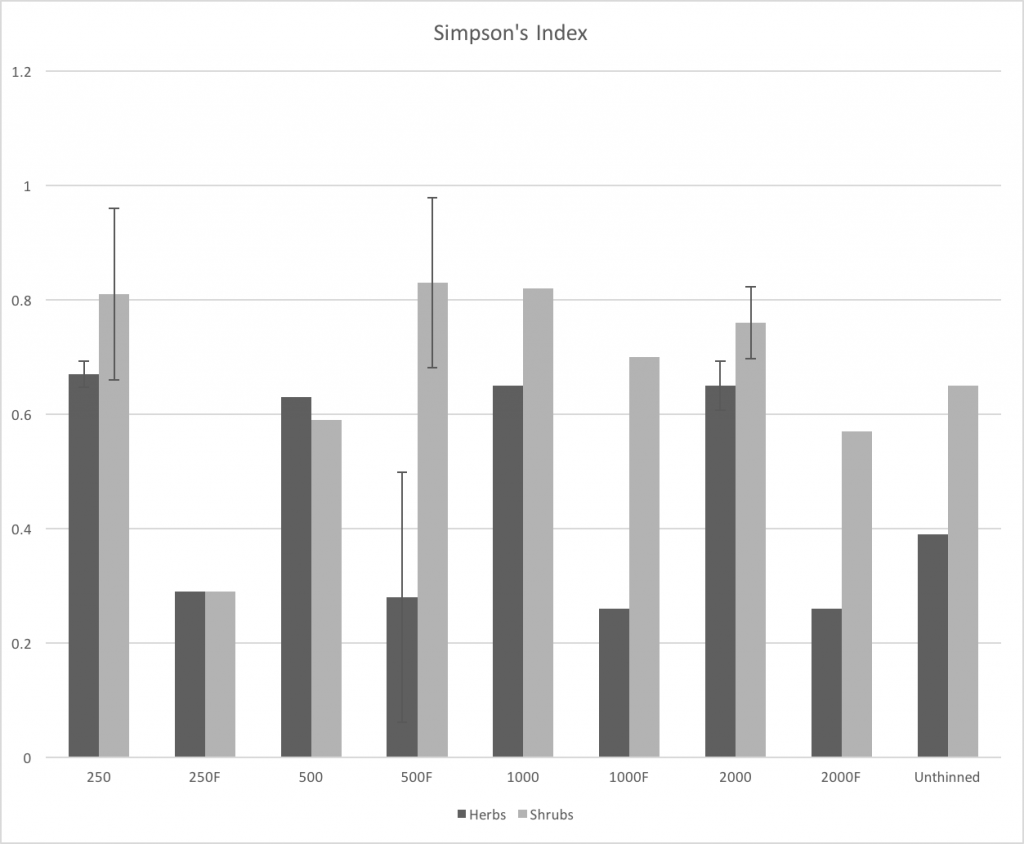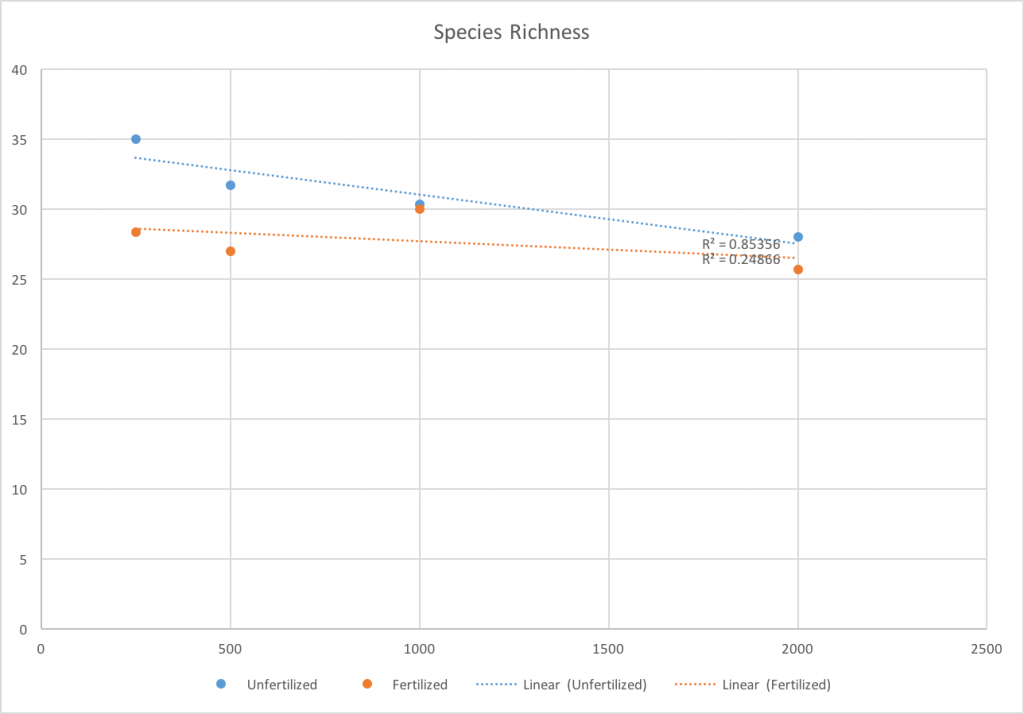Project 1 – Forest Stand Density: Integration of Trees, Forage (Silvopasture), and Habitat Management
This project examined the effect of pre-commercial thinning and nitrogen fertilization on the ability to produce grazing forage (species abundance) and on the ecosystem’s biodiversity (species richness, species diversity, structural richness, structural diversity).
Replicate study areas were established in Kelowna, Summerland and the Cariboo. Each study area had 9 units with varying stand densities (250, 500, 1000 and 2000 stems/ha) as well as one fertilized and unfertilized unit for each density. Vegetation samples were taken across transects to estimate volume crown index and species richness.
The study found that species richness, species abundance and structural richness were not strongly influenced by forest stand density. Species diversity was higher at higher stem densities and structural diversity was higher at lower stem densities. Species richness, structural richness and structural diversity were not strongly influenced by fertilization. Species abundance increased with fertilization, whereas species diversity decreased with fertilization.
The study concluded that pre-commercial thinning and fertilization are beneficial for increased productivity of timber and grazing forage of silvopastoral systems, but have mixed effects on the ecosystem’s biodiversity. It suggests that managers of silvopastoral systems should maintain intermediate levels of both stand densities and nitrogen fertilization in order to maintain and enhance the economic and environmental benefits of these systems.

Sample of how measures of biodiversity were analyzed and displayed. Error bars correspond to 95% CI between the three study areas.

The correlation between stand density and the various measured indexes was measured through regression analysis. Correlations were considered significant when an R2 value was higher than 0.7.
For the complete report, see: Report 1- Forest Stand Density
